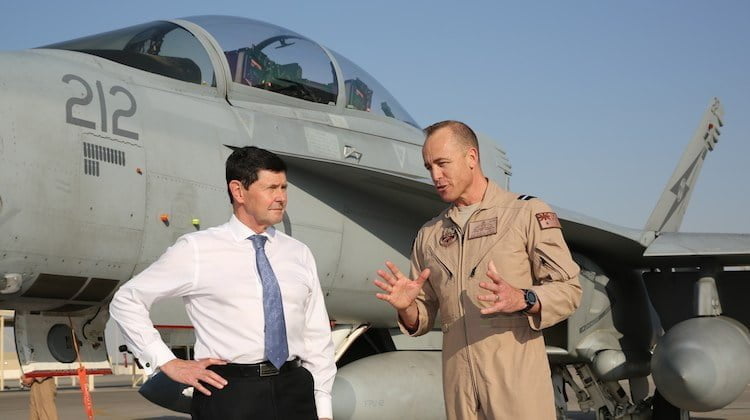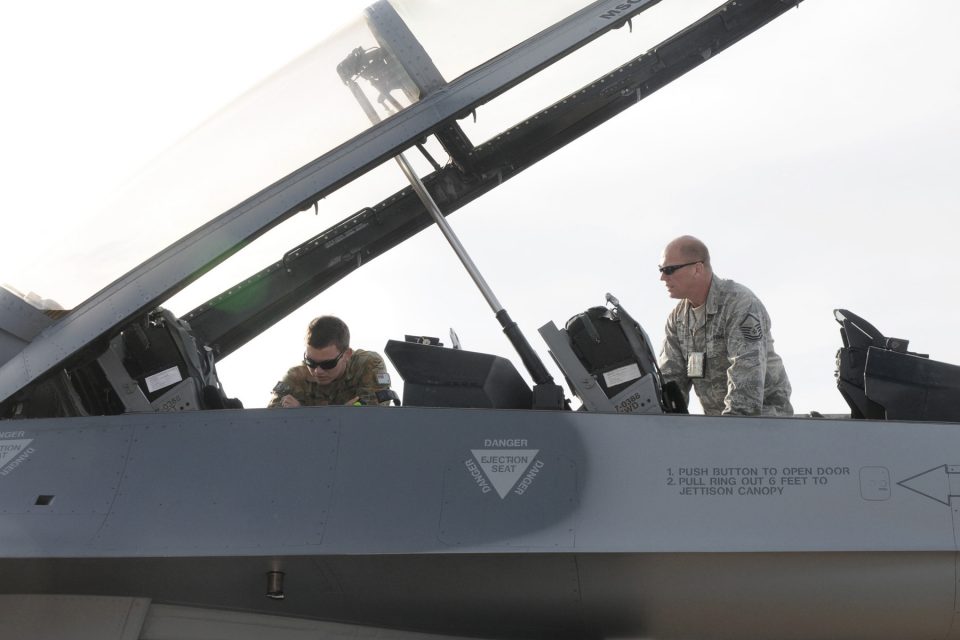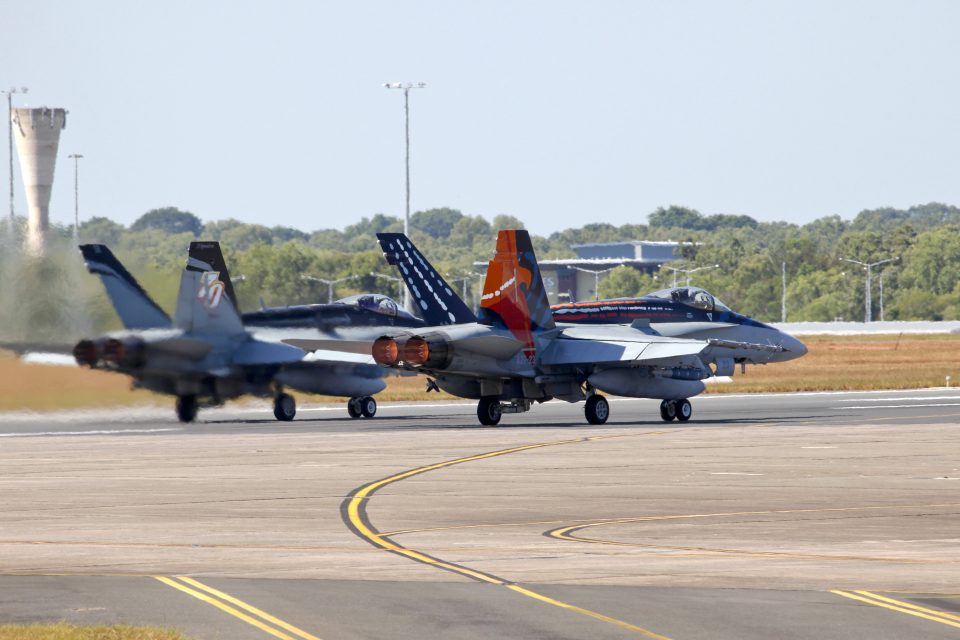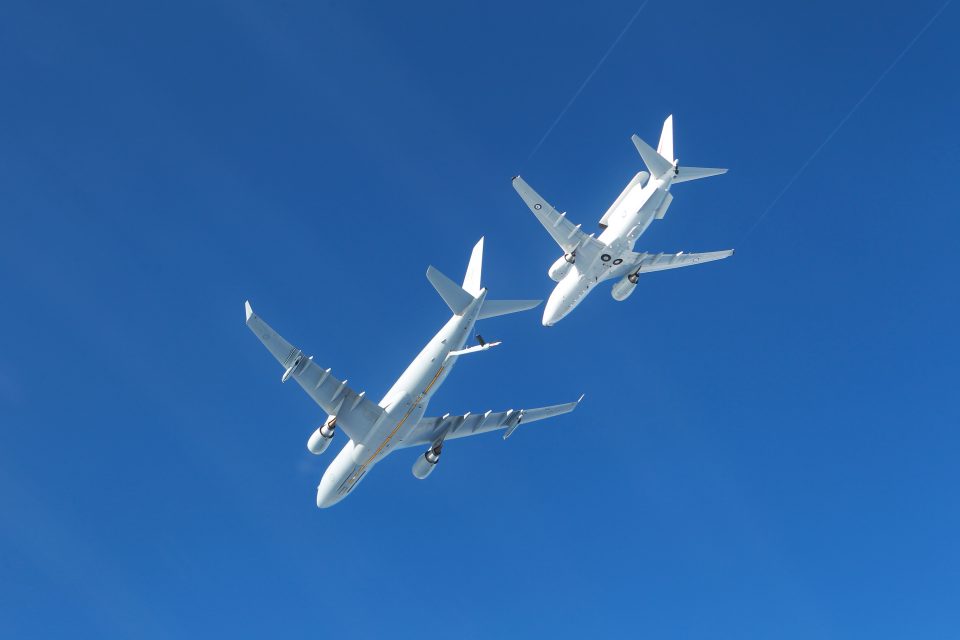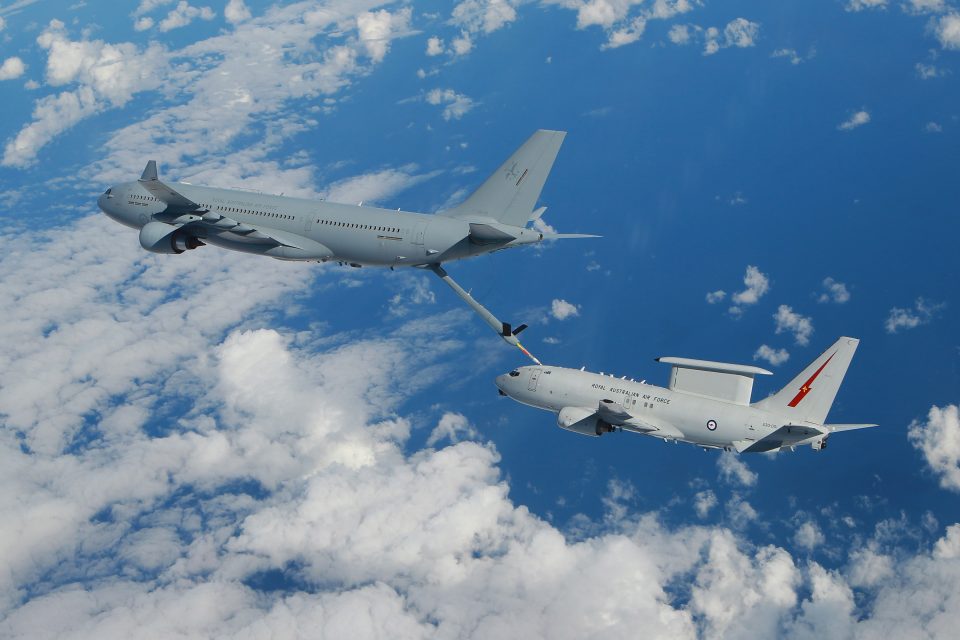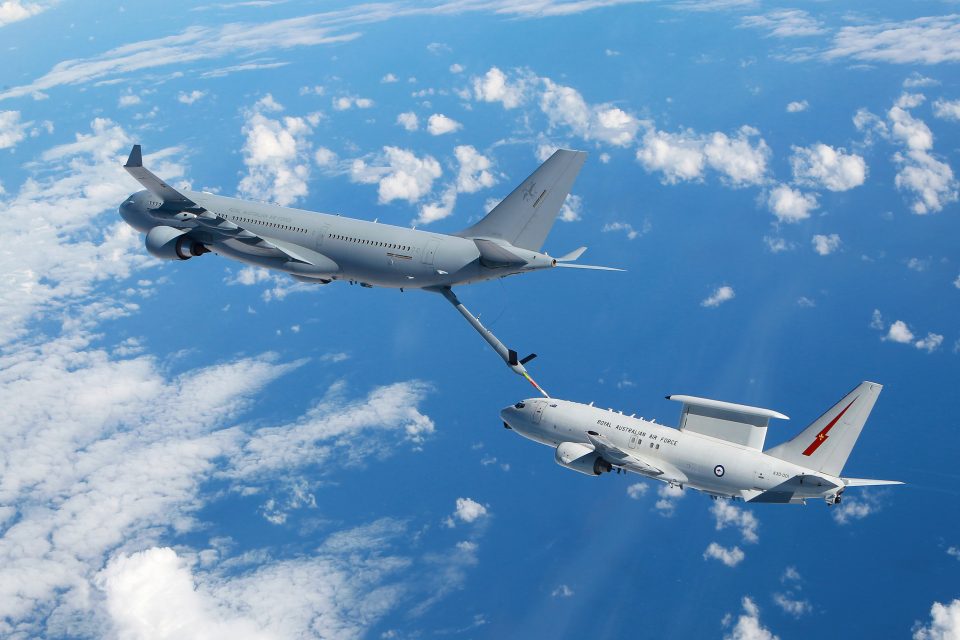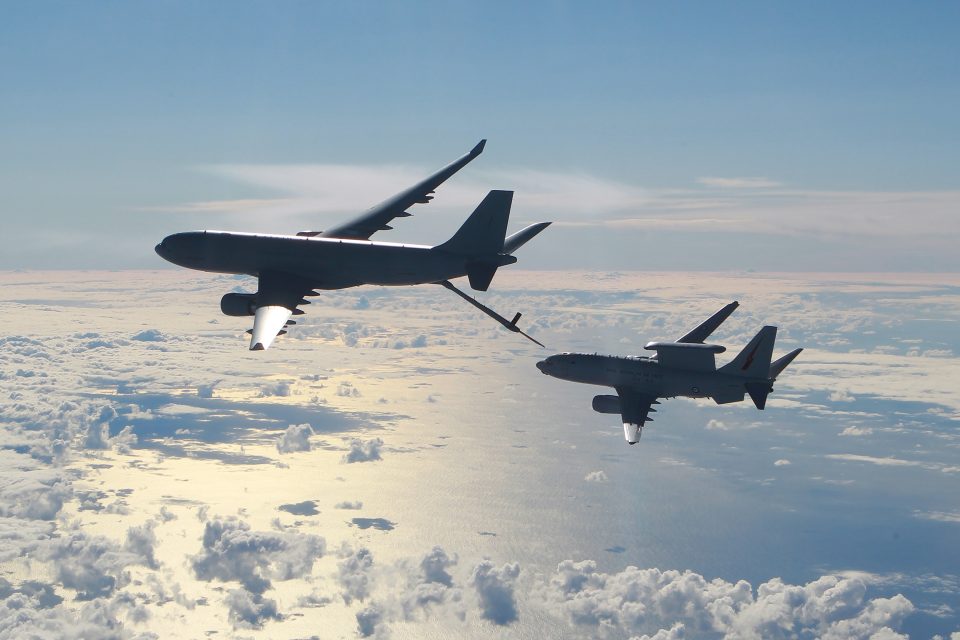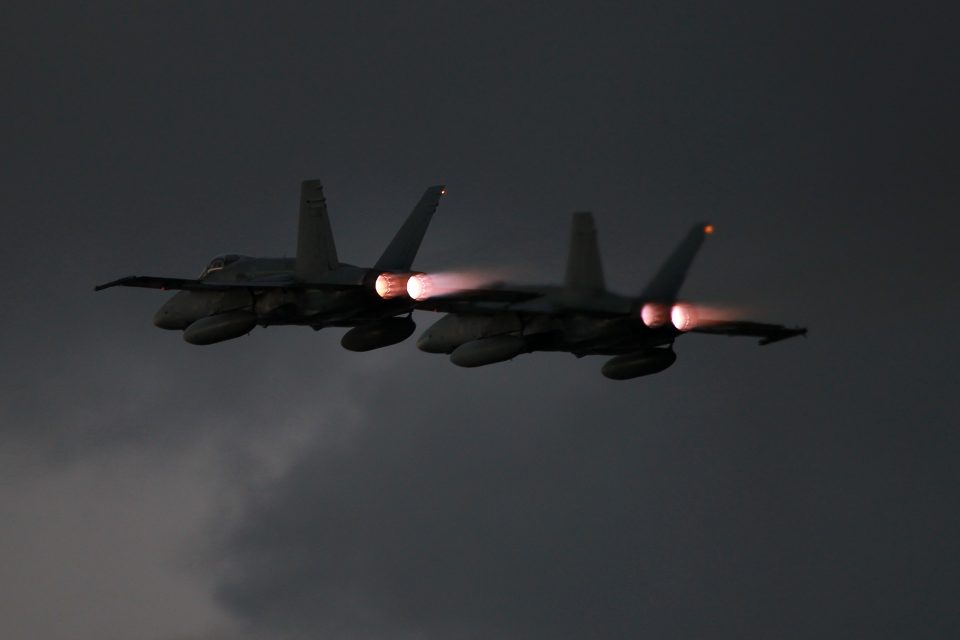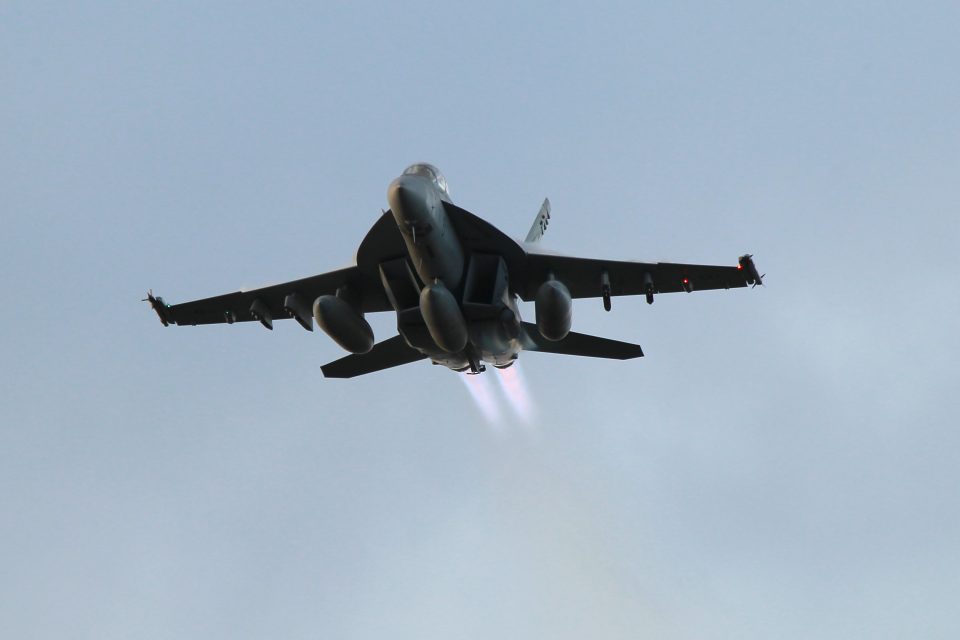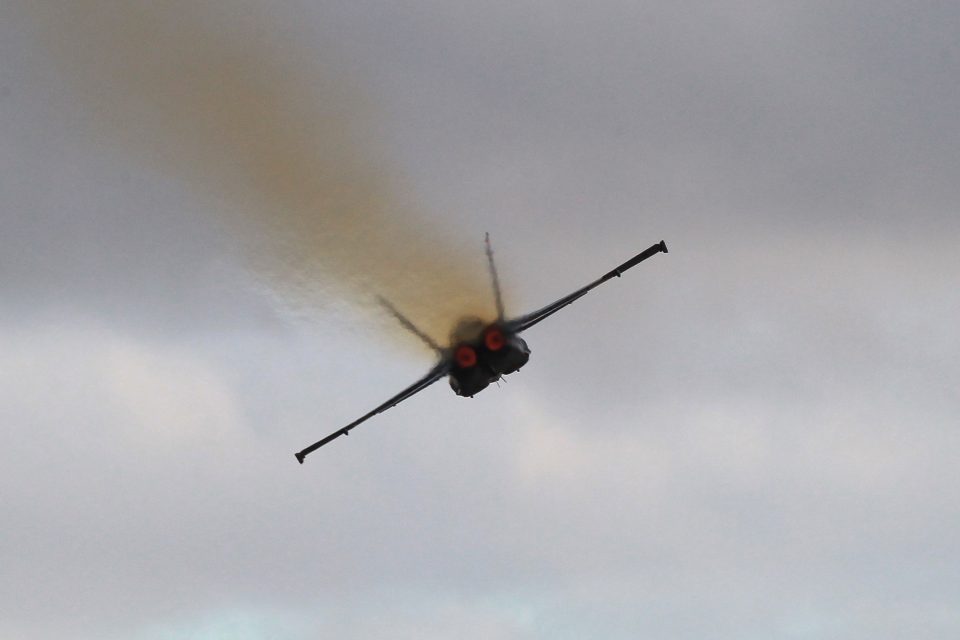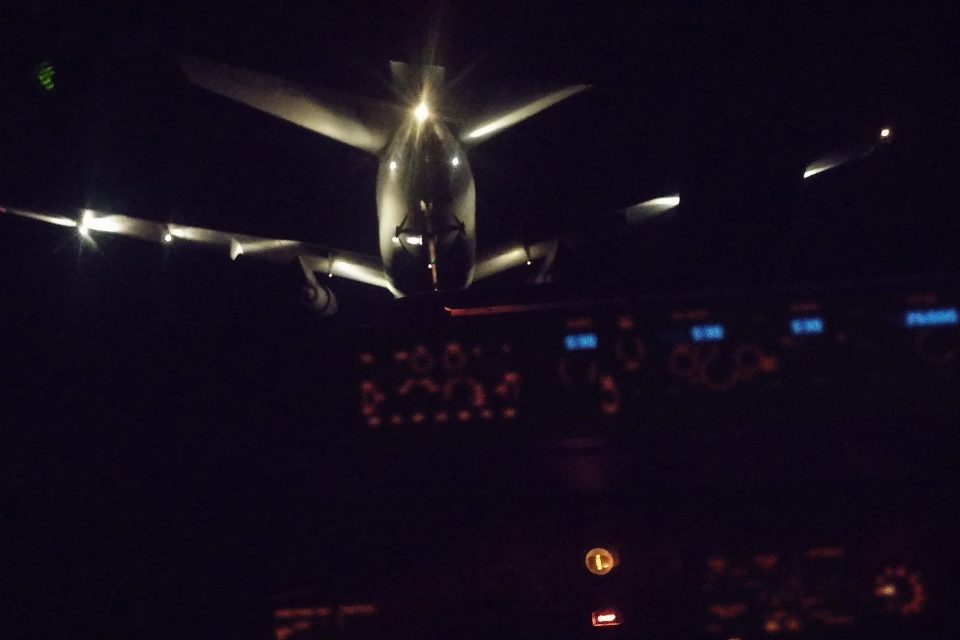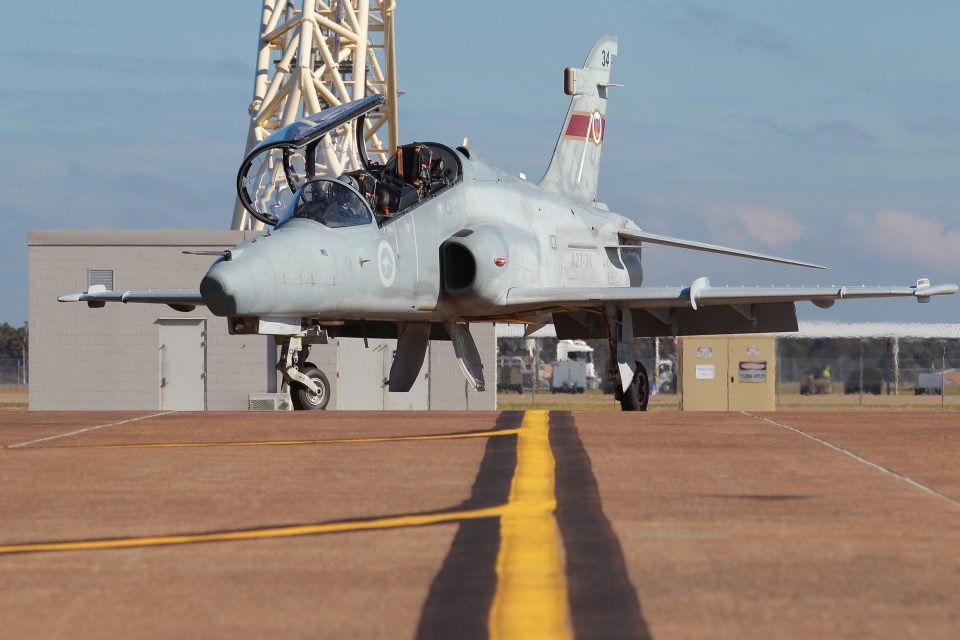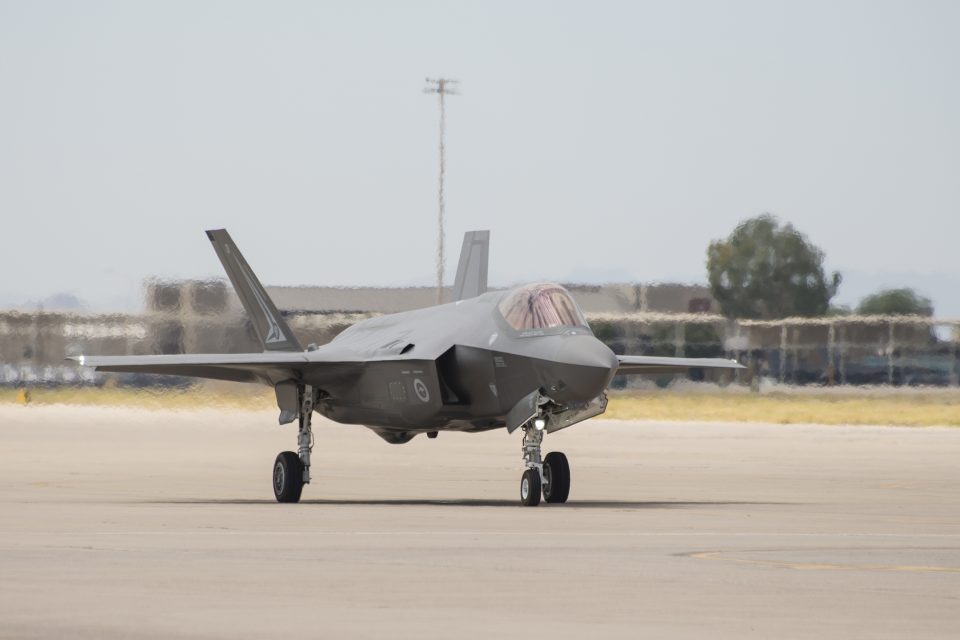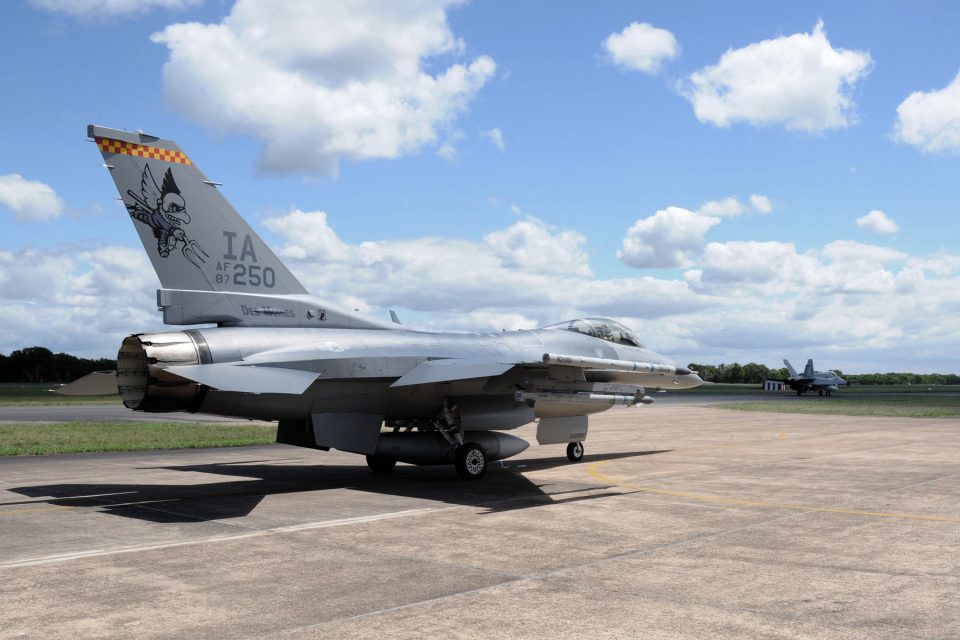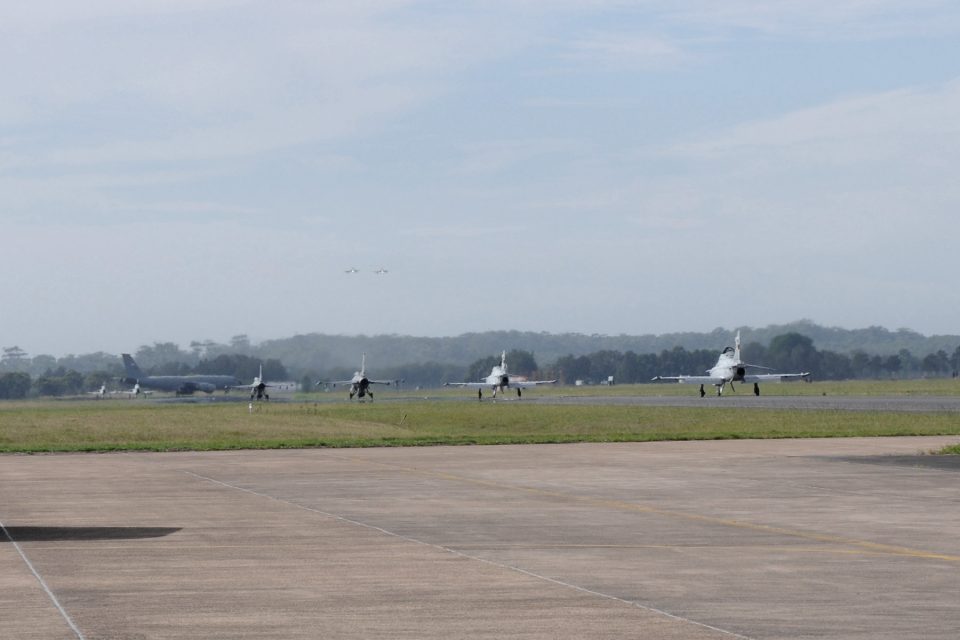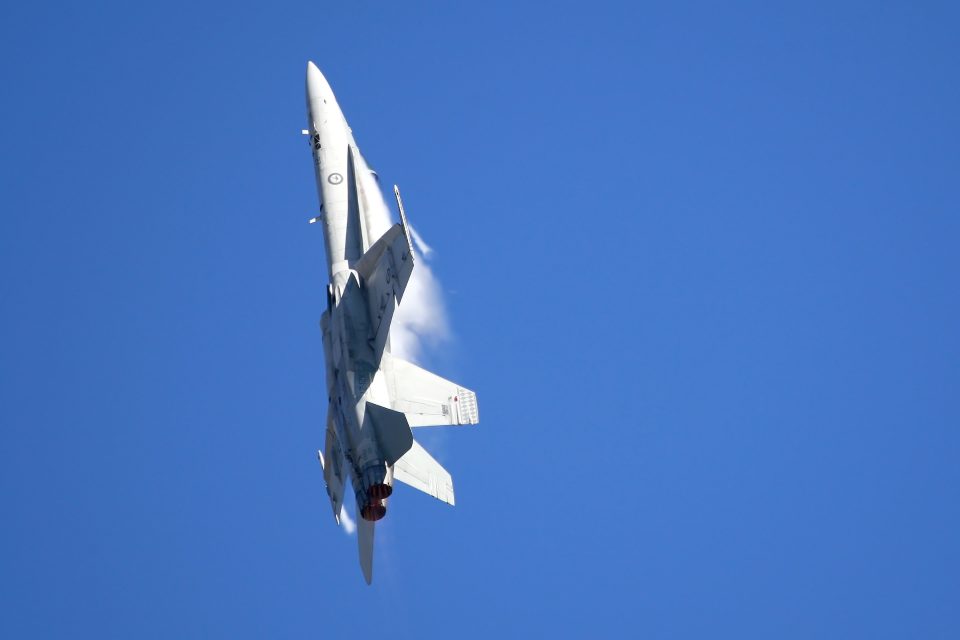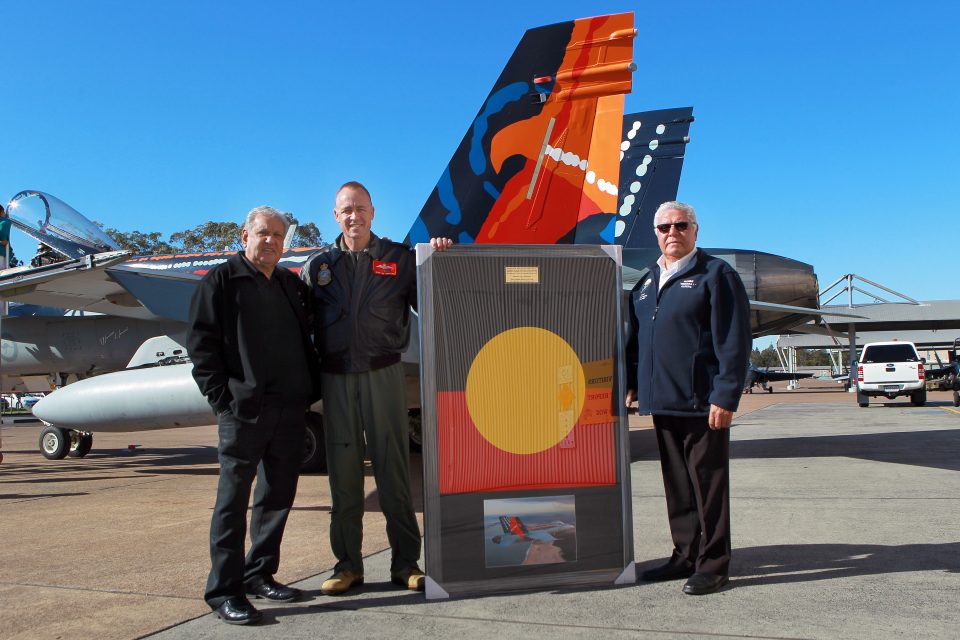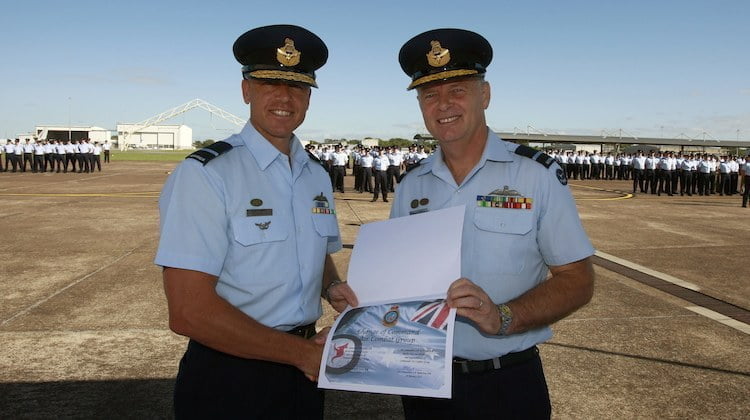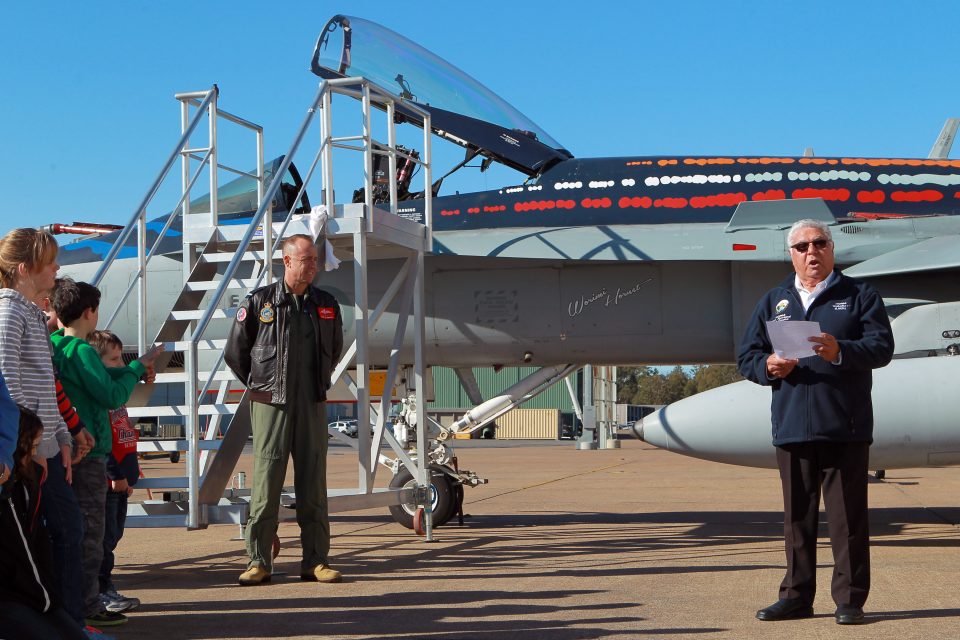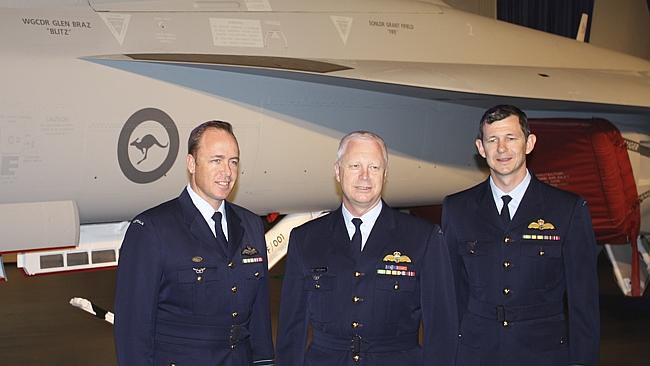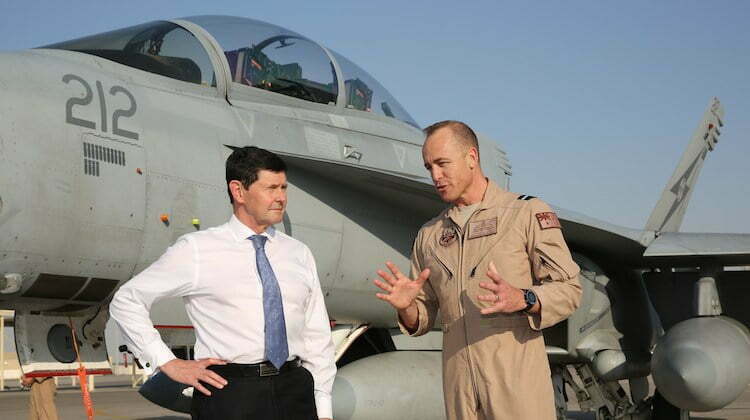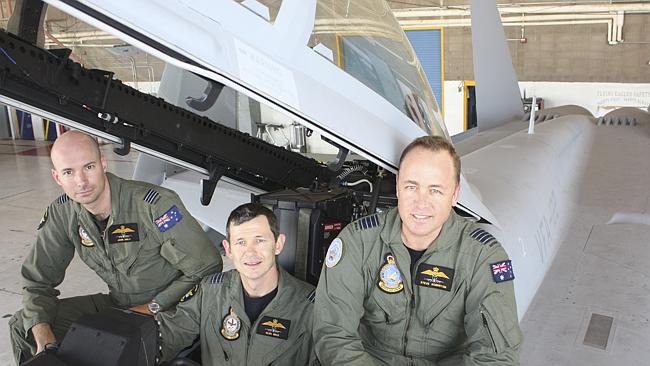2016-04-06 By Robbin Laird
Air Commodore Steve “Zed” Roberton knows about airpower transitions.
He led the transition in the Royal Australian Air Force (RAAF) from F-111 to Super Hornet, Commanded the RAAF’s initial Air Task Group to the Middle East, where for the first time the RAAF took an integrated air package which included lift, strike, tanking and airborne C2/ISR, and operates from the key fighter base which will be a key home to the F-35.
This transition for Roberton is about shaping airpower for integrated operations in the information age; it is not about staying in the 20th century world of disaggregated air from maritime from ground forces.
It is about shaping an integrated force driven by the new fifth generation approach.
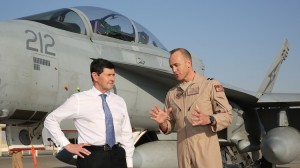
And for the RAAF, this approach is crucial because unlike the USAF or the USN, the RAAF does not have a large force of specialized aircraft to operate in an evolving approach to integration; the RAAF with the Navy and the Army need to lead a process of force structure integration shaped by a key driver like the F-35.
As Roberton put it in an interview at Williamtown Air Base on March 24, 2016:
“The Australian Defense Force is in a different position than the U.S. Navy or Air Force, in that we are largely being air asset-led.
Our aviation assets are out ahead of where we are with development of our surface combatants.
For Australia, the F-35 is not just about making everything else in the battle space better and more effective.
It’s more about providing options for commanders to accord them the right time to choose how to deploy force so that the right asset can be where it needs to be to get the desired effect.
Increasingly, for us, that’s going to be both kinetic and non-kinetic.
The F-35 is going to provide us a level of temporal control that we haven’t really had but this will only happen if we get the information sharing right.
But, we’re still in a position where we are waiting for some of the other force structures to become more effectively integrated in the way ahead.”
He highlighted that working with the U.S. transition was crucial as well, but recognized a gap which had to be addressed.
“We need to have enough influence with the U.S. that they understand that the maritime domain really is important for us as an Air Force.
The U.S. Navy with their surface fleet , with the Super Hornets and Growlers, has meant that, although, the F-35 is an important program for them, it’s not fundamental for them like it is for us.
I would argue the U.S. Air Force has never shown the level of interest and fascination at integrating with maritime forces that we need. We’ve got to be able to influence the shift that we think is necessary.”
We discussed briefly the concept of the kill web which Rear Admiral Manazir had introduced at his presentation at the Mitchell Institute earlier that week in Arlington, Va and Roberton readily embraced the idea of shift from a linear kill chain and hub-and-spoke operations to one of an distributed force contributing to capabilities across the integrated battlespace.
(Note: My colleague Ed Timperlake had attended the Mitchell Institute session and communicated the results in time to discuss with Air Commodore Roberton).
As Air Commodore Roberton sees it, there is a three-phase process underway and “we are only at the first step.
“We need to be in the position where our maritime surface combatants are able to receive the information that we’ve got airborne in the RAAF assets. Once they’ve got that, they’re going to actually be trying to be able to do something with it.
That is the second level, namely where they can integrate with the C2 and ISR flowing from our air fleet.
But we need to get to the third level, where they too can provide information and weapons for us in the air domain.
That is how you will turn a kill chain into a kill web. That’s something that we want in our fifth generation integrated force.
And in a fifth generation world, it’s less about who is the trigger shooter but actually making sure that everybody’s contributing effectively to the right decisions made as soon as possible at the lowest possible level.
And that is why I see the F-35 as an information age aircraft.
I’m less concerned about the load outs on the F-35. You can give it another ten weapon stations and you would miss the core point.
What’s actually important is how the F-35 makes other weapon providers or effect providers out there far better and shape faster reaction times.
A lot of people seem stuck in the old mindset of how many weapons we are going to stack on each aircraft.
That’s almost two generations ago.
In some ways, we are going back to the concept of military aviation early in World War I where we are the eyes and ears for the combat force forward operating.”
Clearly, the approach discussed by Air Commodore Roberton meant that his own job was in transition as well.
“In ten years time, my successor in this job will be dealing a lot more with other elements within the ADF , with other government agencies and leveraging information management and decision making.
Shaping and keeping the link or connectivity services dynamic will be a key capability not just focusing on the individual platform.”
During his presentation at the Williams Foundation seminar on new approaches to air-land integration, he focused on the crucial importance of pushing decision making to the key point of attack or defense in an operation.
In the presentation, he made the case that the airborne forward air controller was going to become more important in the evolving battlespace, and needed to be empowered to work with the deployed force to execute rapidly in the fluid battlespace as well.
Roberton Williams Foundation Presentation
And last year, he provided an excellent overview on his experience with the first deployment of the integrated air task force, and this transition is a crucial one as the RAAF shapes its future as well.
“We managed to self-deploy. It was and remains a fairly modest, but very important, contribution.
The fact is, I don’t think the RAAF could have done this, at this scale, and this packaged level, ten years ago.”
This experience along with his work on transitioning from the F-111 to the Super Hornet are key building blocks in his leadership for the next transition, namely the fifth generation enabled air combat force.
For earlier pieces, including an interview with Air Commodore Roberton last year, see the following:
https://sldinfo.com/the-raafs-air-combat-group-middle-east-operations-and-the-way-ahead/
The photos in the slideshow highlight aircraft based in Williamtown, or in the case of the KC-30A working with aircraft based at Williamtown.
An F/A-18 Hornet conducts an aerial display over RAAF Base Williamtown in preparation for the Wings over Illawarra Air Show.
F/A-18A Hornets based at RAAF Williamtown, NSW, participate in Exercise Aces North which was conducted in the Northern Territory. Exercise Aces North 2015 is the culmination of Fighter Combat Instructor (FCI) course held at RAAF Base Tindal and Darwin over the period 28 May-25 June 2015.
Exercise Aces North is supported by personnel and assets from Number 1 Squadron and Number 2 Operational Conversion Unit.
Two F/A-18A Hornets take off in formation from RAAF Base Williamtown during Exercise DAWN STRIKE. Dawn Strike represents the final mission of the Fighter Combat Instructor (FCI) Course held at RAAF Base Williamtown.
FCI course was run from 12 January to 26 June 2015 at Number 2 Operational Conversion Unit (2OCU). The aim of FCI course is to graduate expert leaders and instructors capable of tactics development, validation and instruction and is run every two years.
KC-30A MRTT and E-7A Wedgetail conduct Air to Air refueling testing in the airspace near RAAF Williamtown. From 1-13 June 2015, air-to-air refueling (AAR) trials were conducted between a RAAF KC-30A Multi-Role Tanker Transport (MRTT) and an E-7A Wedgetail Airborne Early Warning and Control Aircraft.
A Royal Australian Air Force No. 2 Squadron E-7A Wedgetail airborne early warning and control aircraft completes a night-time air-to-air refuel from a United States military KC-10 Extender Air-to-Air Refueling Tanker Aircraft.
Australian F-35A flying out of Luke Air Force Base, USA (credit Lockheed Martin)
The first squadron of ten F-35B Joint Strike Fighters (JSF) are operational after the United States Marine Corps (USMC) declared Initial Operating Capability (IOC) on 31 July 2015.
RAAF personnel working with JSF will be tapped into an international support network and will have the opportunity to work alongside Defence industry to sustain the JSF fleet.
Australia is scheduled to achieve IOC for its first Squadron of F-35s to be based at Williamtown in 2020.
No 76 Squadron Hawk-127 aircraft return to Squadron lines after conducting an aerial display during the No 76 Squadron Family day at RAAF Base Williamtown.
F-16 C aircraft from the 132nd Fighter Wing (132FW), Des Moines, IA are seen operating from the Williamtown Royal Australian Air Force (RAAF) Base in preparation to launch during a Dissimilar Air Combat Training (DACT) mission at the Williamtown RAAF Base, Australia on February 23, 2011.
The 132FW is seen conducting DACT mission “Sentry Down Under.”
All but the F-16 photos are credited to the Australian Ministry of Defence; the others to the USAF.
The second slideshow focuses on Air Commodore Roberton.
The first two photos highlight the Super Hornet transition.
The third photo shows The Minister for Defence, the Hon Kevin Andrews, MP (left) speaking with Commander Air Task Group, Air Commodore Steve Roberton during a visit to the Middle East Region.
The fourth photo shows outgoing Commander Air Combat Group Air Commodore Anthony Grady, AM, (right) Officially hands over his duties to Air Commodore Steven Roberton, AM by signing the Change of Command certificate.
The fifth photo shows Commander Air Combat Group, Air Commodore Steve ‘Zed’ Roberton listens to an address by Local Worimi Elder Uncle Neville Lilley during a ceremony at RAAF Base Williamtown during NAIDOC Week.
The final photo shows. Commander Air Combat Group, Air Commodore Steve ‘Zed’ Roberton presents a framed Aboriginal flag and Worimi Hornet print to Local Worimi Elders Uncle Neville Lilley (right) and Uncle John Ridgeway during a ceremony for NAIDOC Week at RAAF Base Williamtown.


